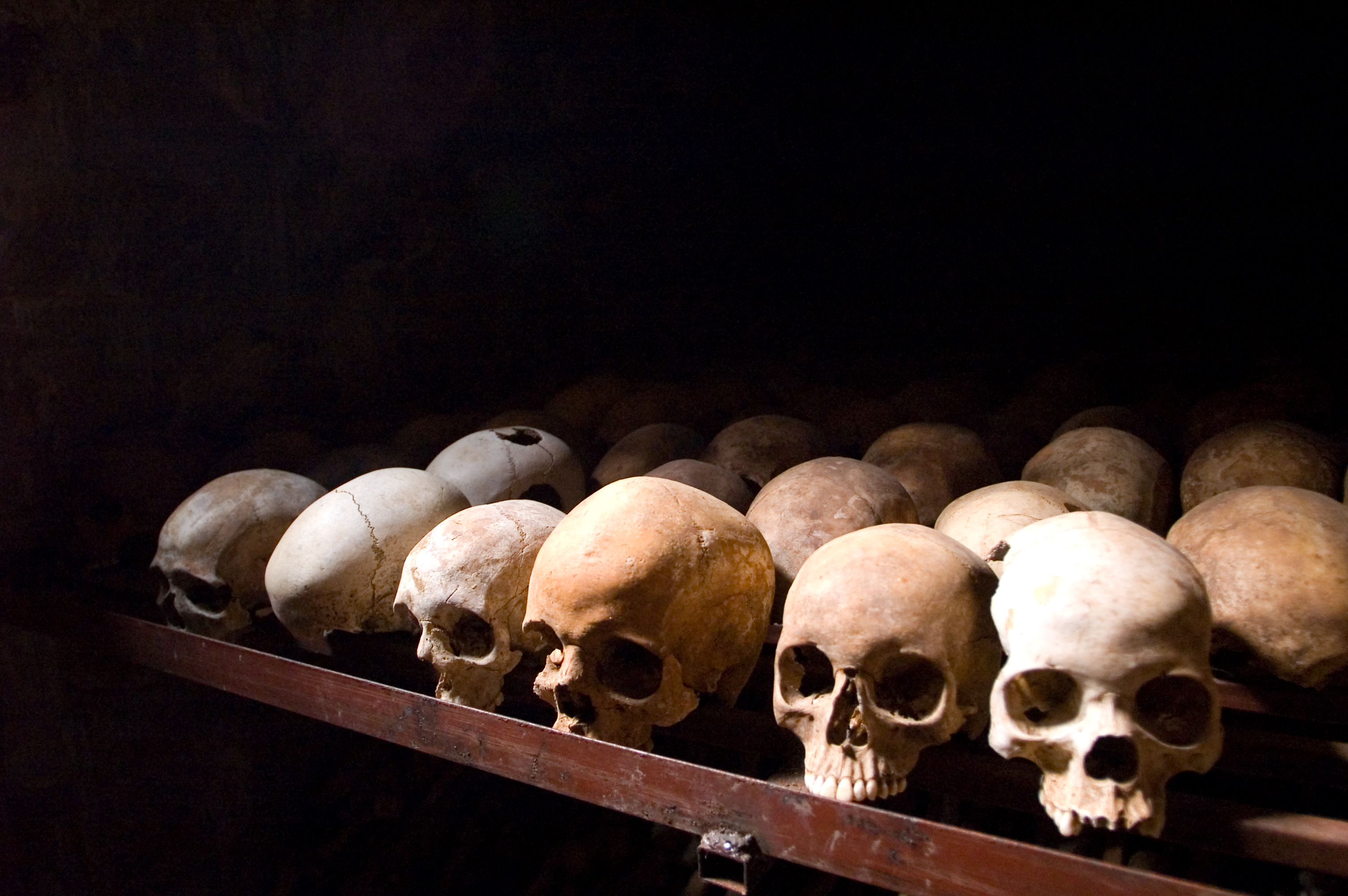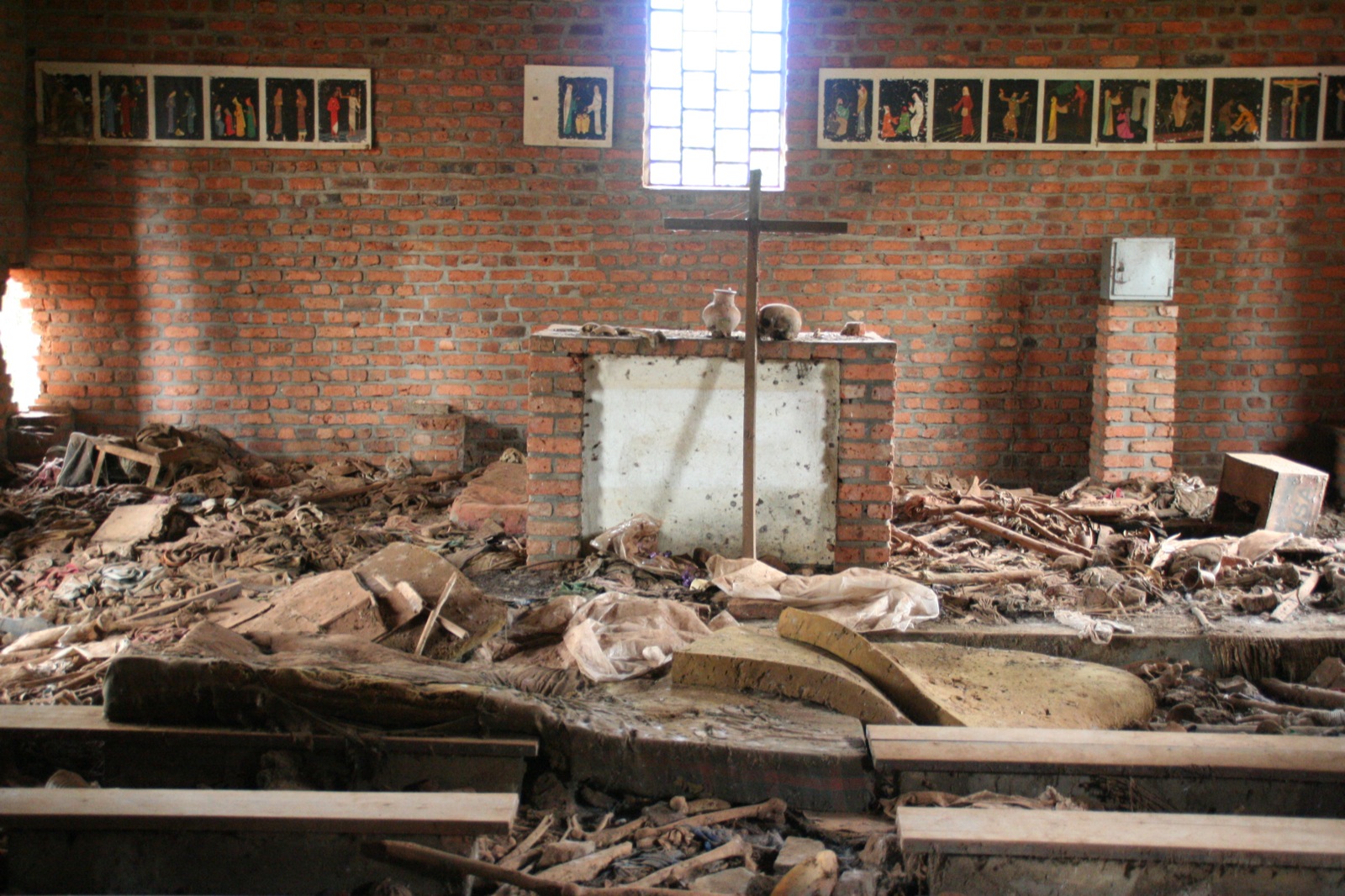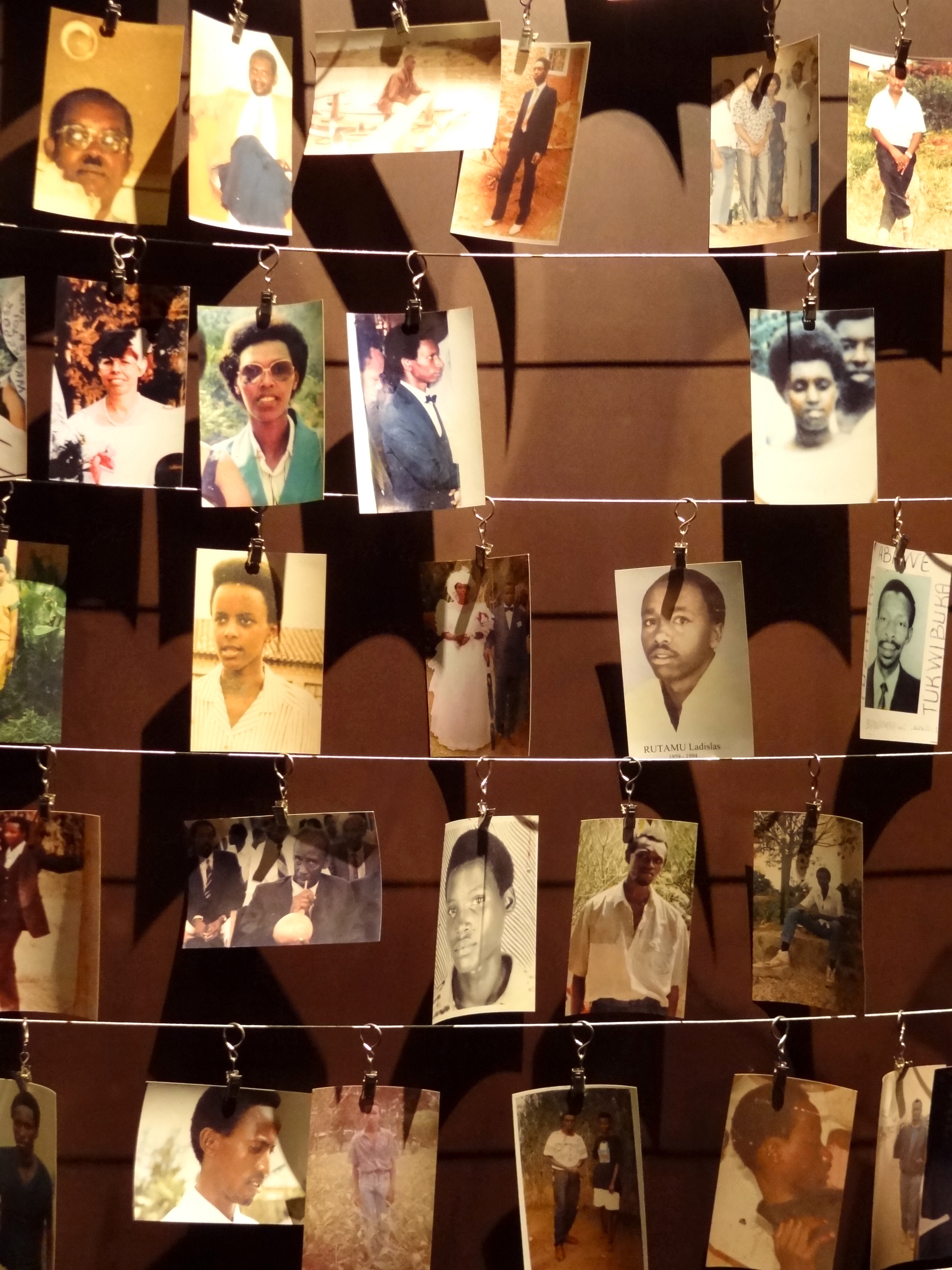The Rwandan Genocide (1994)

Skulls on display at the Nyamata Memorial for Rwandan Genocide. (Creative Commons photo. Attribution to author and info can be found here)
All of the ethnic issues that had been building in Rwanda turned into a genocide in which an estimated 800,000 people died. This was a highly planned, well-organized, systematic attack on the Tutsis by the government and the Hutu majority. The violence started soon after the President’s plane was shot down when the Presidential Guard attacked the Prime Minister Uwilingiyimana despite being protected by the UN peacekeepers. They stormed into his office and captured him, his staff, and the UN peacekeepers before he was able to get on TV and ask the people to stay calm. Many of the people in the group were tortured during this attack, including the peacekeepers. This was done in extremely violent fashion, with one person having their achilles cut and other had their genitals removed. This extreme violence led the UN to decide to remove their troops because they were worried the violence was getting out of control.
All foreign personnel were removed from the country to save their lives, although many people see this as a poor decision. There are a ton of people who believe that they could have stopped the violence if they would have fought back instead. The only people who were allowed to leave were
westerners, and they were warned not to try to help the Tutsi who were being murdered. There were scattered reports of Belgians who tried to help people they knew in a variety of different ways. At the same time, the UN peacekeepers were told not to fire unless fired upon due to the small numbers of soldiers they had in the country. The problem is that the Hutu realized this so they were told not to fire on them. Instead they fired at the Tutsi who were around them, and the peacekeepers couldn’t do anything.
The start of the violence was coordinated using the radio broadcasts that told them to rise up and kill the Tutsis. Both the military and the militias started killing using either guns or machetes in and around their own houses or towns. So neighbors would go door to door killing whole families of people that they knew prior to the outbreak of violence. Many people fled to churches to try to save them from the violence, but this didn’t stop the attacks. The goal was to erase whole families so that they could erase any memory of your existence to begin with. Rape and body mutilation became the norm as people would keep trophies from the people they raped and/or killed.
Some of the most horrific instances happened to those who took refuge in churches during the violence. The Gikondo Massacre was the mass murder of 110 people (including kids) in a church when the militia broke into the church to check IDs. They left the group and then came back with machetes and guns, killing everyone in the building including the priests. The foreign

The alter at Ntama Church where 5,000 people were killed. (Creative Commons photo. Attribution to author and info can be found here)

Images of victims at the Genocide Museum in Kigali. (Creative Commons photo. Attribution to author and info can be found here)
(Polish) officers who found the remains of the massacre would take pictures and videos of the aftermath and show the world. A later massacre at a church became known as the Nyarubuye Massacre, in which 20,000 civilians were killed in a Catholic Church. The rebels came in to kill everyone in the building, which included Hutu moderates who weren’t interested in being involved in the violence. When the rebels realized there were tons of people hiding in the building, they chose to use bulldozers to knock down the building and finish off all the rest of the people.
The international community did very little to stop any of this violence for a variety of different reasons. The UN peacekeepers are often the focus of people who condemn actions during this violence, since they often left people in instances of certain death as they retreated out of the area. A few of these instances were really rough, like when they left 2,000 refugees at a school with the Hutu standing outside waiting for the peacekeepers to leave so they could massacre the refugees. Other people give partial blame to the French, who had helped train the Hutus in previous years. While that may be debatable, what is not debatable are the few French citizens who participated in the raping of women during the violence. The US decided this was a ‘local conflict’ that they wouldn’t get involved in as their justification to stay out of it. Secretary of State Warren Christopher made it a point not to call this a genocide and even tried to get the UN to withdraw from the country. We wouldn’t even step in to jam the radio broadcasts that were calling out Tutsi positions, claiming that it would violate international law. Once the violence got out of hand the UN decided to send in 5,500 troops. They were sent to the country using US troop carriers, but the US government overcharged them for using our equipment. The US did send one trained officer of Rwandan heritage to help fight the rebels, who used his military expertise to help greatly. Paul Kagame would be so instrumental in helping stop the violence that we would be elected president soon after.
